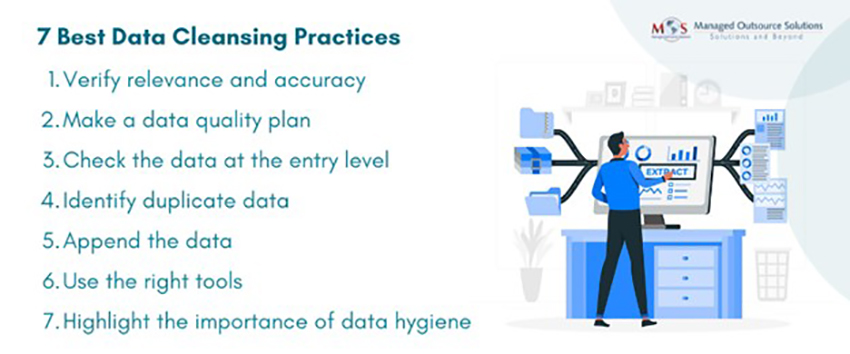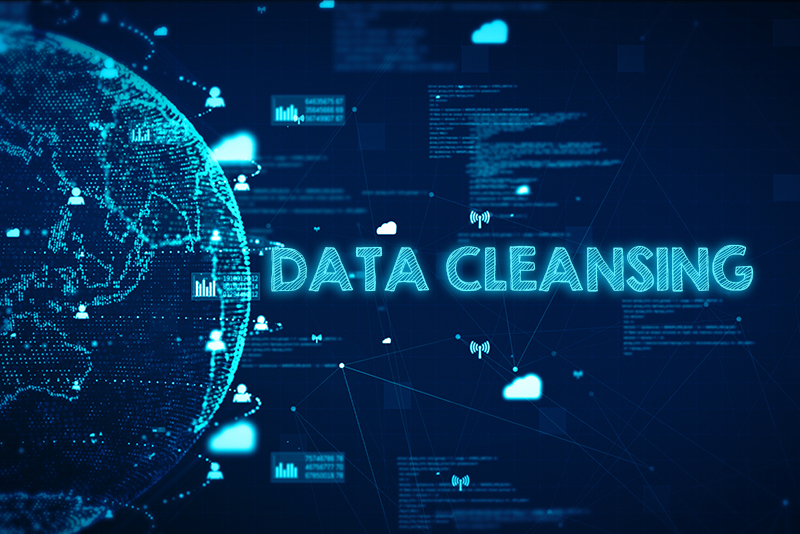Organizations rely on data for their day-to-day functioning and having quality data is crucial to support data-driven decision making. Dirty data is a threat to a company’s bottom line. Data cleansing involves fixing incomplete, incorrect and inaccurate information in the organization’s database. It is the first step in the data preparation process and can be performed either manually or with the assistance of software. However, creating a clean database can be a challenge and many businesses rely on data cleansing companies to ensure accurate, reliable, and comprehensive information in their database.
What Kind Of Data Can Be Cleaned?
Data cleansing services can fix a variety of data quality issues:
- Inaccurate data: Data like customer details, client details or market research reports need to be analyzed to make sales and marketing decisions. Inaccurate data will definitely affect the entire functioning of companies that are strictly data driven.
- Inconsistent data: This happens when the same data appears in different versions in the database. This will make segmentation difficult and impact analytics.
- Corrupt data: Data that is unusable or damaged would be unreadable.
- Duplicate data: This is one of the main factors impacting data quality. Duplication of data can occur due to data migration, manual data entry, batch imports, etc.
- Incomplete data: Incomplete data can affect business decisions by failing to provide business insights.
- Outdated data: Outdated data lead to information management challenges such as productivity losses and misinformed decisions.
Data cleansing companies employ professionals who are experts in performing data cleansing. They can identify and correct data inconsistencies, and help businesses maintain accurate, up-to-date information for making strategic decisions.

Best Data Cleansing Practices
- Verify the relevance and accuracy of the data: The accuracy of the data can be validated manually but this can be difficult when it comes to a large or more complex set of data. Using data quality control tools can help save time and effort.
- Create a data quality plan: Develop a data quality plan to ensure the health of the data. Set expectations and discover where and how the errors are appearing. This will help identify the root cause of the problems and figure out incorrect data.
- Check the importance of data at the entry level: Avoid entering inaccurate data into the database. Checking data at the entry level will help avoid duplication.
- Identify duplicate data: Duplicate data is a carbon copy of another data that shares information inadvertently. It affects the reputation of your company and negatively impacts the customer experience.
- Data append: This is the process of filling in information that is missing in the required areas. It can be an email address, part of a name, address, telephone number, etc.
- Use the right tools: Using proper tools is essential for effective data cleaning. Outsourcing their data cleaning process to an established outsourcing company specialized in it will ensure the use of the right technology. Examples of top tools for data cleansing include:
- Microsoft DQS: performs data cleansing in 4 stages – mapping, computer-assisted cleansing, interactive cleansing, and the export stage.
- TIBCO Clarity: a user-friendly tool that can quickly analyze and cleanse raw data that also provides a rich feature set for high volume data preparation
- Tableau Prep: cleans and shapes the data by providing diverse cleaning operations.
- Open Refine: cleans data and transforms it from one format to another format.
- Trifacta: helps identify inaccurate or incomplete data.
- Clouding: can be used to delete, merge and import data and even modify large sets of data.
- Data Ladder: designed to provide clean data across the enterprise.
- Win Pure: a full set of tools to correct, complete, clean, and transform data.
- Melissa Cleanser: can be used to cleanse any kind of data and improve its standards
- Highlight the importance of data hygiene: Using data cleansing services can optimize data quality across your organization. To maintain data quality, you need to make every employee in your firm aware of the importance of clean data. You must make sure your employees will adhere to best practices to maintain data quality.
Cleaning data is as important as generating it. Inaccurate data affects the financial stability of an organization and slows down its entire functioning. Following best practices in data cleaning will support efficient decision making, reduce costs, and increase return on investment.




